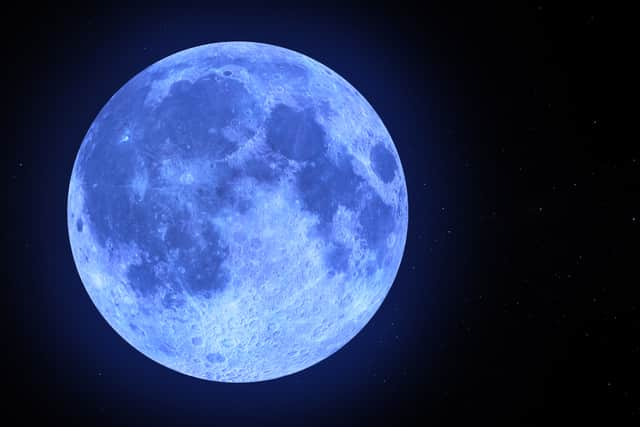Supermoon August 2023: when is the Blue Moon, what is it and why are there two in August?
and live on Freeview channel 276
August is here, and will be one of the most active months for stargazers across the UK who will prepare to catch a glimpse of the Sturgeon Moon as well as the Blue Moon. These will be the eighth and ninth moons of the year.
Not only does August mark the first time a month will have two full moons, but one will be a supermoon. Royal Museums Greenwich explains how a supermoon comes to be, saying: “The distance between the Moon and the Earth varies, because the Earth is not right at the centre of the Moon’s orbit and the Moon’s orbit is not a circle (it’s an ellipse). The moment when the Moon is closest to the Earth is called a lunar perigee.
Advertisement
Hide AdAdvertisement
Hide AdThey add: “When the Moon is furthest away it is known as a lunar apogee. If the lunar perigee occurs very close to a full moon, then we see a supermoon. If a lunar apogee occurs very close to a full moon then we see a micromoon.”
So, when will you be able to see the August super moon? Here’s everything you need to know about the celestial event.
What is the Blue moon?
The second full moon, known as a Blue Moon, will peak on Wednesday 30 August.
What is a Blue moon?
Advertisement
Hide AdAdvertisement
Hide AdAccording to Royal Museums Greenwich: “The Moon completes 12 full cycles of its phases in about 354 days – which is 11 days short of a calendar year. Every two and a half years or so the difference adds up to an extra, 13th full moon occurring during the year and this relatively rare occurrence is sometimes referred to as a ‘blue moon’.


“However, the precise origins of the term are uncertain: it was originally the name given to the third full moon of a season containing four full moons, and today ‘blue moon’ is also sometimes applied to a second full moon occurring within a single calendar month.”
When is the next full moon?
The next full moon will peak in the UK on August 1, and is sometimes known as a ‘Sturgeon Moon’. The Old Farmer’s Almanac says there will be 13 full moons throughout the year. These are listed below.
- January 6: Wolf moon
- February 5: Snow moon
- March 7: Worm moon
- April 6: Pink moon
- May 5: Flower moon
- June 3: Strawberry moon
- July 3: Buck moon
- August 1: Sturgeon moon
- August 30: Blue moon
- September 29: Harvest moon
- October 28: Hunter’s moon
- November 27: Beaver moon
- December 26: Cold moon
Top Stargazing Tips
Stargazing is easy, you just go outside and look up at the night sky, but to get the most spectacular views, there are a few rules you should follow. The best tip is finding a dark-sky site, and checking the weather forecast before going. Light pollution can often affect how much of the night sky occurrences we see, even more so, cloudy weather conditions make it more difficult to see the stars beyond.
Advertisement
Hide AdAdvertisement
Hide AdIf you are unable to get to a designated dark-sky site, find the least illuminated spot you can where you can see the horizon. Stargazing is such a popular hobby for amateurs and professionals alike, it’s likely there is a club near you, or you may have friends with a similar interest. Finding a buddy or club to join on the cold dark nights is always helpful, and one of the best ways to stay safe when stargazing.
Comment Guidelines
National World encourages reader discussion on our stories. User feedback, insights and back-and-forth exchanges add a rich layer of context to reporting. Please review our Community Guidelines before commenting.
